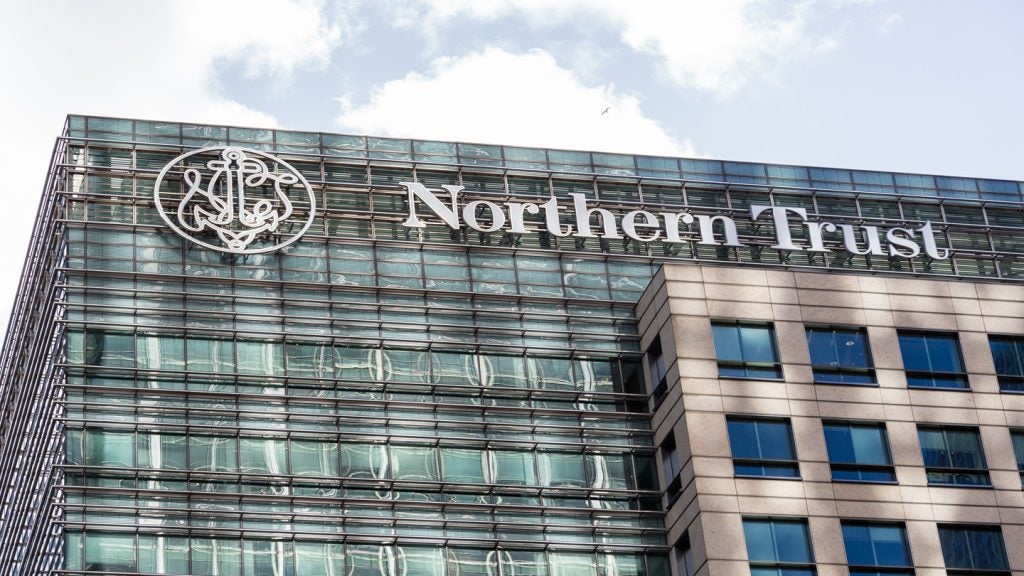Credit Suisse has for a long time been a global wealth
management powerhouse, but the engine of the business recently has
been in the Asia-Pacific region. Marcel Kreis, head of CS’s private
bank in the region, says its one-bank model helps it stand out from
the crowd. William Cain reports.
It is hard not to be impressed with the steady course charted by
Credit Suisse in one of the most tumultuous periods in financial
history.
And if Brady Dougan, the bank’s CEO, had to choose one department
to underline its achievements in the past 12 months, it would
undoubtedly be its Asia-Pacific private banking division, headed by
Marcel Kreis. The Asia-Pacific business achieved net new money of
12.2 percent in 2008 and has started 2009 at an annualised rate of
22 percent, adding CHF5.5 billion in the first six months of the
year.
Globally, Credit Suisse is acknowledged as the standard bearer for
the one-bank model – arguably the only bank that has made it work.
Within its peer group it is one of the leaders in attracting client
money. But it still lags behind the pure play firms, the likes of
Julius Baer, EFG International and Bank Sarasin, which all claimed
business-wide double-digit growth in 2008. In Asia-Pacific,
however, the business measures up as one of the best wealth
managers anywhere in the world (see chart below).
“We have been very pleased with net new assets inflow in
Asia-Pacific, certainly in the last year and since the beginning of
this year, we have seen double-digit growth,” Kreis told Private
Banker International. “That speaks volumes about the confidence and
trust placed in Credit Suisse.
“We take every competitor very seriously, but my job is to grow our
Asia-Pacific franchise based on the strengths and core competencies
we have and I think we are peerless at the moment with the success
of our one-bank model. We are peerless not just because many of our
competitors have fallen by the wayside, but because Credit Suisse’s
management has had the discipline and foresight to really take the
bull by the horns, fix the balance sheet and improve the capital
ratios.”
How well do you really know your competitors?
Access the most comprehensive Company Profiles on the market, powered by GlobalData. Save hours of research. Gain competitive edge.

Thank you!
Your download email will arrive shortly
Not ready to buy yet? Download a free sample
We are confident about the unique quality of our Company Profiles. However, we want you to make the most beneficial decision for your business, so we offer a free sample that you can download by submitting the below form
By GlobalDataGlobally, Kreis said the bank’s biggest achievement in the last 12
months has been the “consolidation and solidification of our
position as a premier financial institution and leading wealth
manager”.
“We have actively and successfully managed our business and our
clients through one of the biggest crises in the last 100 years,”
he added.
He said the bank’s ability to attract new talent in all departments
showed it is seen as an attractive place to come for senior
bankers. Another area the bank is a success is in its ultra high
net worth (UHNW) business, where Tee Fong Seng was recently
appointed as head in Asia-Pacific. It defines this as clients with
more than CHF50 million invested at Credit Suisse.
UHNW programmes have been popular in private banking in 2009,
despite evidence that the most profitable business is found in the
$500,000 to $10 million threshold. There are some in the industry
who feel playing the UHNW (see page 3) playing field is already
overcrowded. But Kreis said the segment remained an important one
for Credit Suisse.
“Many of our clients in Asia are first and second generation
entrepreneurs, and their businesses, given the Asia growth story,
continue to expand, contract and specialise, depending on what
their individual strategies are,” said Kreis. “We are ideally
positioned to support these clients, to offer services that go well
beyond portfolio management. The UHNW client segment fits right
into our strategy to be an effective and efficient user of capital.
Rather than seeing it as a separate and lower yielding business
opportunity, we see it as accretive to our private banking
proposition. It enhances profitability and also deepens and
strengthens relationships because in the lifetime of clients and
their companies, there are opportunities to offer additional
services and help them grow their businesses.”

While portfolio management services are increasingly common, access
to lending facilities, corporate advisory, IPO management and
investment banking is a combination which is still quite rare and
even more rarely delivered effectively.
Credit Suisse calculated cross-divisional activity, effectively
referrals within the business, generated CHF5.2 billion of revenue
in 2008, equivalent to 56 percent of the bank’s net revenue for the
year. In 2007, the activity added CHF5.9 billion to revenue.
The CS private bank gains a large number of clients following
mergers and acquisitions, which are results of referrals from the
investment bank. The process puts the bank in a position to
prospect for clients and generate a strong business pipeline.
Achieving the delicate balancing act of improving referrals within
the bank and at the same time maintaining a focus on relationship
building is not an easy one. And it has not been accomplished
without struggle and resistance in some quarters. Kreis has
previously said a carrot and stick approach was necessary to change
bankers’ behaviour and encourage the one-bank model to take
hold.
Another Credit Suisse banker said that in 2006, at the outset of
the project, investment bankers would rather “throw themselves out
of a window than hand over clients to the private bank” and private
bankers “would rather shoot themselves” than send clients the other
way. But once the process started, employees found the referral
system made their work more interesting and clients and staff found
it more rewarding.
“If you look at our peer group, and the pure play private banks
too, what we have is strong business banking networks, a one bank
model – and that’s definitely a key competitive advantage for us,”
said Kreis, who joined Credit Suisse from UBS in 2007.
Gentle rebalancing towards Asia

Credit Suisse has 8.6 percent of its assets under management in
Asia-Pacific, a figure which has increased from 6.9 percent since
2006. Kreis said he does not want to specify targets for
Asia-Pacific AuM growth in the next couple of years. He said
movements in markets and currencies will have a major impact.
“We at Credit Suisse see Asia as a growth region and we are
committed to further developing our resources there,” he
said.
“We have an excellent investment service offering for our clients.
Where the AuM will be is very much a function of our continuing
success in developing the franchise and attracting new clients as
well as growing the wallet share of existing clients. A big factor
is the currency and market movements which impacts the AuM base,
but we have grown by more than 20 percent in terms of net new
assets in the first half of this year and I am confident we can
maintain double digit growth rates in net new assets.”
The bank has increased its number of relationship managers (RMs) in
the region from 230 in 2006 to the current level of 400. Those 400
RMs make up 11.8 percent of its total, up from 8.2 percent in
2006.
Kreis said there may be a rebalancing of relationship managers in
favour of Asia when conditions start to improve, but said it was
unlikely to change significantly.
Target of 4,000 RMs by 2010

Regarding a pledge the bank made in February 2008 to increase
its total number of RMs by 1,000 to around 4,000 by 2010, Kreis
said that in the past few years, the bank has managed to reach and
even exceed its annual hiring targets. In the current and coming
year, it expects a slowdown due to the market environment but
remains confident of increasing the number of RMs by 1,000 compared
to early 2007 by continuing to hire prudently and on an adequate
cost level.
“We have said in the past the private bank will hire 1,000
additional relationship managers worldwide but the environment has
changed including in Asia-Pacific – the earth has really moved, and
not in a positive way,” he said.
“We will look to continue to invest and grow, particularly in Hong
Kong and Singapore and the domestic markets where we have set up
our business, most notably Australia, Japan and Indonesia.
“In Asia-Pacific currently, we have around 12-15 percent of our
total relationship managers, and I do not envisage that number
changing dramatically. When we see a positive growth trend again,
it may increase in favour of Asia, though there is not an enormous
supply of experienced private bankers available even now.”
Structured products came under fire during the financial crisis
when issuers Lehman Brothers and AIG collapsed. The fall-out has
engulfed private banks like Credit Suisse, as investment banks are
heavily involved in the process of designing and creating the
assets.
In May, Credit Suisse paid out CHF50 million to retail investors
who lost money on Lehman Brothers’ capital protected products. It
has paid out a total of CHF150 million so far. Despite the bad
press structured products have attracted, Kreis maintains they have
an important role to play in client portfolios.
“We continue to see structured products, but the complexity and the
underlying investment have changed. It has become much more a
currency play today than equity linked, although as a result of the
last four to five months of very strong equity markets, there is a
gradual return to equity linked notes,” he said.
There is also an increased emphasis on refining the framework for
which types of investments are appropriate for particular types of
investor. Kreis said the crisis obviously caused some serious
fall-out and part of that was the tarnishing of complex structured
products.
“Structured products were certainly temporarily not the investment
vehicle of choice, and there has been a flight to cash. But the
reality is structured products are here to stay,” Kreis added.
“What has changed is clients want a clearer and more transparent
picture of what they are investing in. The key issue was issuer
risk, which was always properly disclosed, and as we go through the
cycles of the investment business sometimes we focus on issuer
risk, at others we focus on it less.
“Today, from a regulatory, political and client point of view,
greater transparency is demanded and we have refined our investment
suitability framework as a result.”







